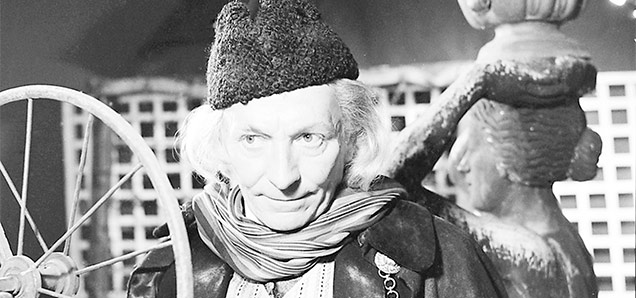G33K LYFE: Space, time and other things, Part 1
 CREDIT: SCIFINOW.CO.UK
CREDIT: SCIFINOW.CO.UKWiliiam Hartnell was the first actor to portray The Doctor in the early days of Doctor Who.
Deep down, somewhere inside all of us, there is a childlike attraction to adventure, a wish to leave behind everything that is regular and mundane, in order to discover something that nobody has ever seen before.
This desire, which lies within so many people, has been the central theme at the heart of some of the most timeless stores to have ever been told, creating events, locations, and characters that have gone down in history as some of the most engaging and everlasting in the history of entertainment, being recognized all over the world.
This spirit of discovery has perhaps been captured in one source, and one character, than it has anywhere else, and for 50 years, fans of Doctor Who have gone on some of the wildest adventures imaginable right alongside The Doctor and his many faces.
Considering its worldwide and seemingly ever-growing popularity, Doctor Who remains to many people a bit of mystery; they may know that it's British, and they may know that the show has been around for as long as their parents, but outside of a few facts it is cloaked by a veil of science fiction geekery, and the quirky, offbeat humour that can only be found in the British isles. Beneath its exterior, however, lies a television program that truly delivers something that everybody can get behind, fulfilling the goals that it set out to accomplish when it first aired in November 1963.
Dawning in the early days of television, the tale of an old alien fleeing his home planet and landing on Earth in a blue police box, meeting human friends and bringing them on adventures through space or travelling through time was a moderately safe, family friendly evening program, designed to shock children, but entertain them and adults alike with a main hero that was very much against the norm. The Doctor, then played by the elderly William Hartnell, was philosophic, arrogant, but super-humanly clever man who would eventually become fond of the human race and protect Earth from the alien threat of the week. While these all sounds like typical science fiction plots (and they are), the creativity and spirit behind the show quickly made it a staple of British culture, and one that continued to quietly break new ground in television.
The creators of the program were able to solve one of the biggest problems that face the creative minds behind any TV show: how to continue once the cast members were no longer able to, and avoiding the awkward fan questions that would be posed by changing the lead without a narrative explanation, a technique that has been used on occasion throughout television history. The writers decided to make The Doctor immortal, regenerating into a new body, with a new personality, fulfilling their in-story purposes, as well as allowing the program to continue on.
Now, as the show nears its 50th anniversary, it has become a true global cultural force, far more popular than it ever was in the original run and finally beginning to be seen in the public eye as far more than a niche show for the extra nerdy. Improvements in technology, storytelling, as well as three inspired choices for the role of The Doctor has introduced the program to a whole new generation of people, and if the popularity continues to rise, than we our kids could be lining up to see Doctor Who's 100th anniversary.
Check out G33k Lyfe next week for part two of this column!













